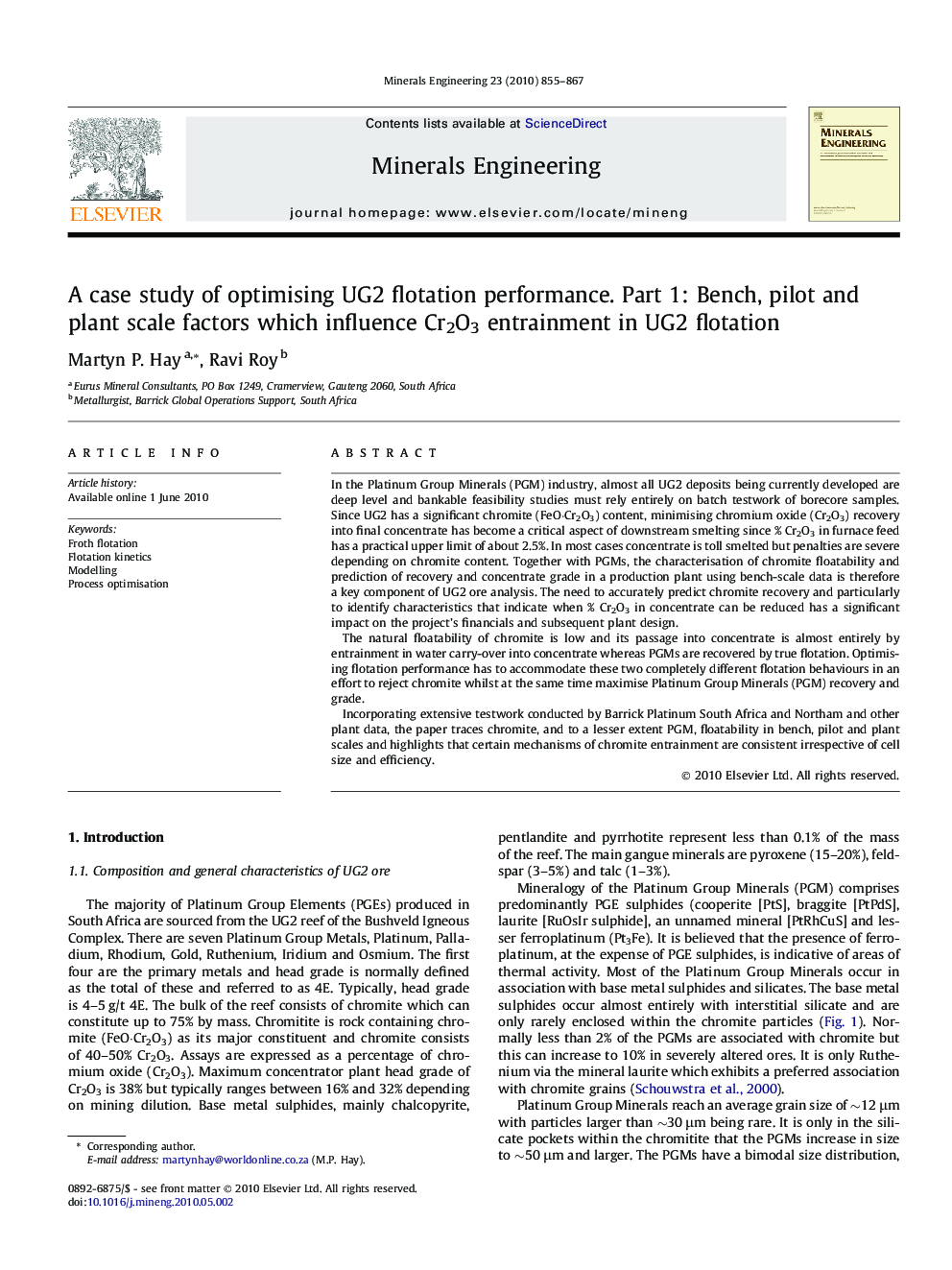| Article ID | Journal | Published Year | Pages | File Type |
|---|---|---|---|---|
| 234028 | Minerals Engineering | 2010 | 13 Pages |
In the Platinum Group Minerals (PGM) industry, almost all UG2 deposits being currently developed are deep level and bankable feasibility studies must rely entirely on batch testwork of borecore samples. Since UG2 has a significant chromite (FeO·Cr2O3) content, minimising chromium oxide (Cr2O3) recovery into final concentrate has become a critical aspect of downstream smelting since % Cr2O3 in furnace feed has a practical upper limit of about 2.5%. In most cases concentrate is toll smelted but penalties are severe depending on chromite content. Together with PGMs, the characterisation of chromite floatability and prediction of recovery and concentrate grade in a production plant using bench-scale data is therefore a key component of UG2 ore analysis. The need to accurately predict chromite recovery and particularly to identify characteristics that indicate when % Cr2O3 in concentrate can be reduced has a significant impact on the project’s financials and subsequent plant design.The natural floatability of chromite is low and its passage into concentrate is almost entirely by entrainment in water carry-over into concentrate whereas PGMs are recovered by true flotation. Optimising flotation performance has to accommodate these two completely different flotation behaviours in an effort to reject chromite whilst at the same time maximise Platinum Group Minerals (PGM) recovery and grade.Incorporating extensive testwork conducted by Barrick Platinum South Africa and Northam and other plant data, the paper traces chromite, and to a lesser extent PGM, floatability in bench, pilot and plant scales and highlights that certain mechanisms of chromite entrainment are consistent irrespective of cell size and efficiency.
